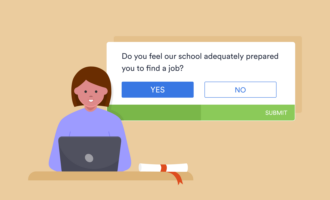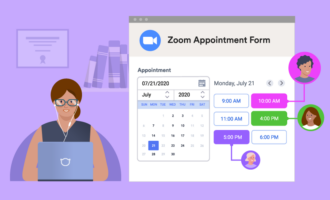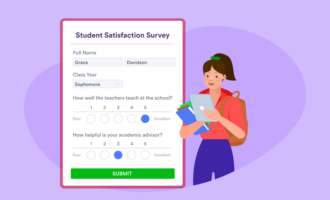Tips for schools to go paperless
- Examine current processes
- Start with online forms
- Automate processes whenever possible
Most adults have fond (or not so fond) memories of hauling their backpacks full of paper to and from school as children. While there may be some nostalgic comfort in thinking back to those times, there’s no question technology has improved enough by now to consider a new way of doing things: paperless schools.
It may seem impossible to divorce the idea of a well-run school from paper homework assignments, detention slips, and folders full of student information, but by going paperless, schools can not only reduce the amount of paper they use but also run more efficiently.
Why schools should go paperless
The average school uses about 2,000 sheets of paper a day. That’s more than 320,000 sheets of paper in a regular school year, and some estimates suggest American schools alone use around 32 billion sheets of paper every year. Using so much paper is both tough on the environment and a costly expense.
There are, however, plenty of reasons to make paperless schools the norm — aside from the environmental and cost-saving benefits. The advantages to a paperless school administration include
- More storage space: Those 32 billion sheets of paper have to go somewhere. Paperless schools can use storage spaces they’ve previously used to house paper as extra classrooms, alternative storage, or even a new employee break room.
- Improved organization: Converting processes to a digital, paperless format can create more organized filing systems, making it easier to retrieve information and less likely that records are lost or misfiled. Plus, using an online homework platform instead of paper assignments makes it easier for students to turn in assignments (and harder for them to use the “my dog ate my homework” excuse).
- More time for school staff: One of the most time-consuming aspects of being a teacher or administrator is wading through the floods of paperwork necessary to run a school. While your staff will still have to complete administrative processes, better organization will save them time and allow them to focus on more important tasks.
- Better communication between teachers and parents: Online portals and other paperless platforms conveniently help connect teachers and parents. It’s much easier to respond to a comment or message in an online portal than it is to schedule in-person or phone meetings.
Tips for transitioning to paperless schools
Transitioning from a traditional to a paperless school won’t happen overnight, but the good news is things get easier once your school starts the process. After you initiate the process of going paperless, you can slowly implement the changes and then focus on educating students. And while the transition isn’t without some challenges, you don’t need to make huge investments in digital services or websites to get there.
Here are three tips for schools looking to go paperless.
1. Examine current processes
Before beginning the switch to a paperless administration, you’ll have to conduct a thorough accounting of the ways you (and your students) use paper. You might have to apply for grants to make sure every student and teacher has a laptop and access to the necessary technology.
Going paperless shouldn’t deprive any of your students or staff of the information they need to succeed, so make sure they have the required supplies. If this is too tall an order to get done in a single overhaul, gradually move from paper to digital processes one step at a time.
2. Start with online forms
Digital form templates, like those available through online form builder Jotform, are one of the easiest ways to shift your processes from paper-filled to paperless. Instead of reinventing the wheel and creating new forms from scratch, you can use Jotform’s 10,000-plus templates and make the transition bit by bit. There are also more than 2,100 education-specific form templates available to help with making the switch.
3. Automate processes whenever possible
With digital forms come automation opportunities. You can start to look for ways to improve your approval processes using the power of online forms.
Part of the hassle of administration is getting approval from the right people, whether it’s for handling new projects, taking disciplinary action, or anything else your staff may need administrative support for.
With Jotform Approvals, you can automate approvals with more than 100 customizable approval flow templates. You can adjust these templates to your liking, even designing them to automatically send notifications to important stakeholders and update approval status instantaneously. Automating these processes can make the work of running a school much smoother.
A great way to make the leap to paperless
Every school’s journey to becoming paperless will be unique, as each has its own challenges. As you progress, tools like Jotform Tables can integrate information from Jotform forms and become a digital database for students and staff to make the transition easier.
Additionally, Jotform has form templates specifically for educators, including student survey forms, homework submission forms, and even parent consent forms, which can increase classroom efficiency as well.
Since there are plenty of resources available to help schools make the switch, going paperless can be easier than you might think, and it can benefit everyone involved.
Photo by Gustavo Fring






































































































Send Comment: